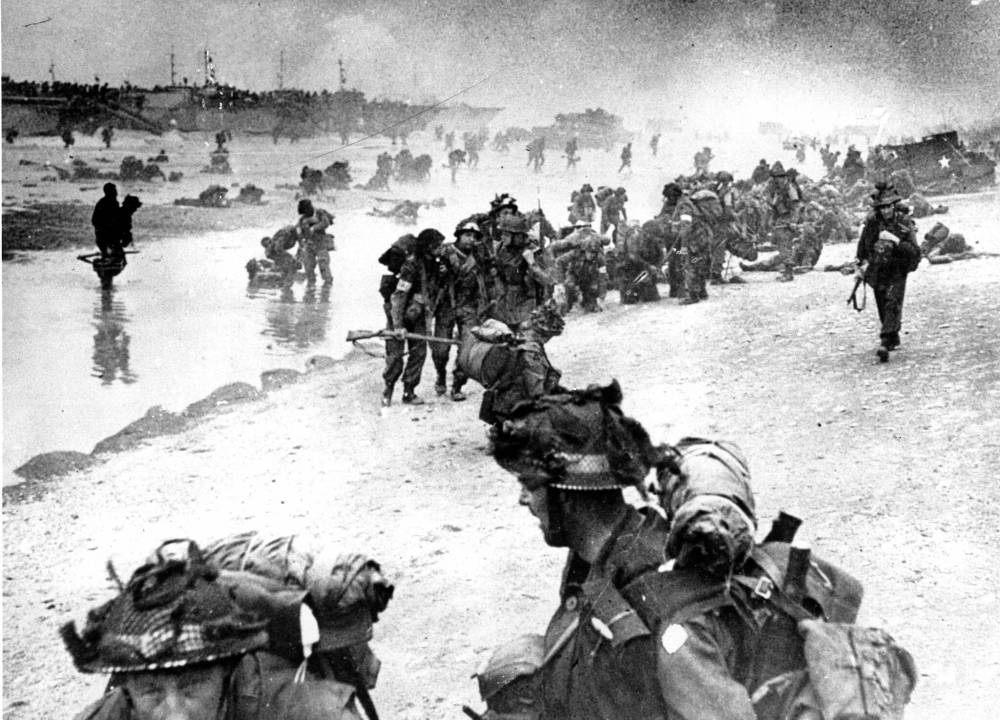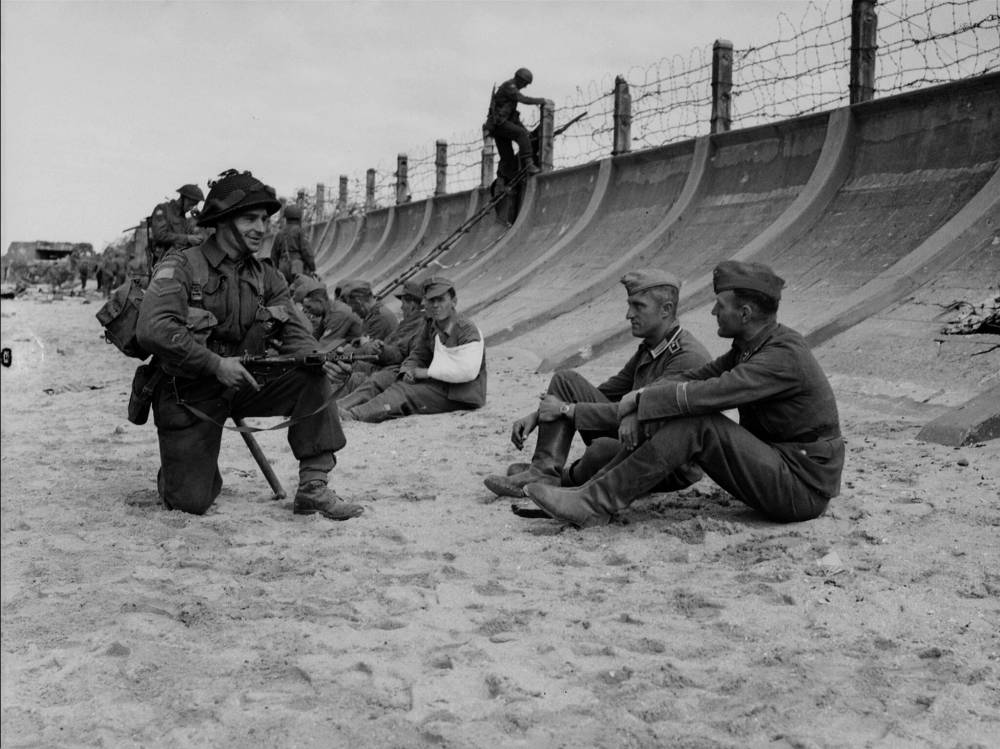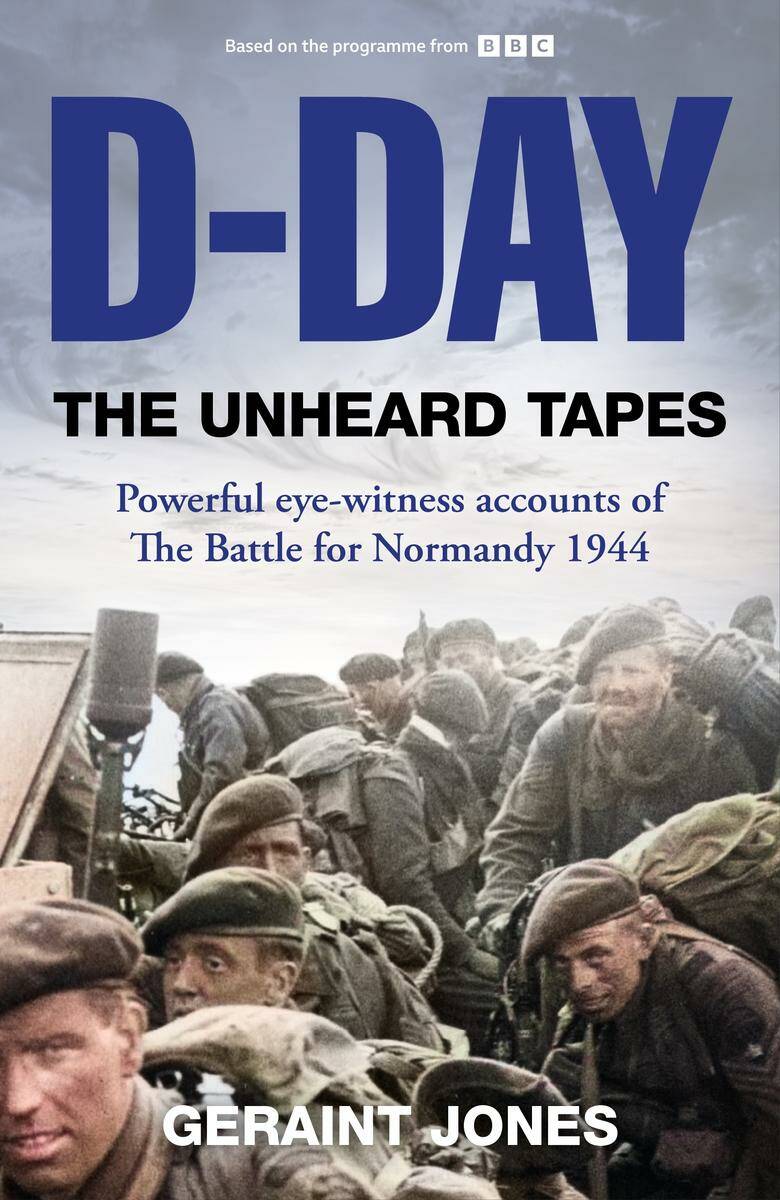Voices of war
Soldiers’ stories, eyewitness accounts paint a powerful picture of D-Day campaign
Advertisement
Read this article for free:
or
Already have an account? Log in here »
To continue reading, please subscribe:
Monthly Digital Subscription
$0 for the first 4 weeks*
- Enjoy unlimited reading on winnipegfreepress.com
- Read the E-Edition, our digital replica newspaper
- Access News Break, our award-winning app
- Play interactive puzzles
*No charge for 4 weeks then price increases to the regular rate of $19.00 plus GST every four weeks. Offer available to new and qualified returning subscribers only. Cancel any time.
Monthly Digital Subscription
$4.75/week*
- Enjoy unlimited reading on winnipegfreepress.com
- Read the E-Edition, our digital replica newspaper
- Access News Break, our award-winning app
- Play interactive puzzles
*Billed as $19 plus GST every four weeks. Cancel any time.
To continue reading, please subscribe:
Add Free Press access to your Brandon Sun subscription for only an additional
$1 for the first 4 weeks*
*Your next subscription payment will increase by $1.00 and you will be charged $16.99 plus GST for four weeks. After four weeks, your payment will increase to $23.99 plus GST every four weeks.
Read unlimited articles for free today:
or
Already have an account? Log in here »
Hey there, time traveller!
This article was published 05/04/2025 (216 days ago), so information in it may no longer be current.
The largest seaborne military invasion of the Second World War has been exhaustively scrutinized in military historical analyses, elicited heart-wrenching memoirs, launched countless war-themed novels and inspired classic movies such as The Longest Day and Saving Private Ryan.
Now more than 80 years after that memorable day of June 6, 1944, readers can partake of some previously unknown first-hand experiences of Canadian, British and American military personnel who comprised the Allied Forces that landed on the beaches of Normandy.
Individual stories emerging from D-Day: The Unheard Tapes come from Allied fighters and from some entrenched Nazi forces who survived that first hectic day, with even more from those who participated in the months-long ensuing battles throughout France.

ASSOCIATED PRESS FILES
In this June 6, 1944 photo, British troops move on the Normandy shore from their landing craft during the D-Day invasion.
Consisting largely of eyewitness accounts from friend and foe alike, this engaging book is a parallel project alongside a BBC2 documentary of the same name, fortuitously recalling long-forgotten sacrifices at a time when extremist views — like those preceding the Second World War — portend the suppression of democratic ideals by autocratic-leaning regimes.
Welsh author and military historian Geraint Jones, who has also co-authored 2023’s Escape from Kabul and contributed to plots woven by prolific American novelist James Patterson, now uses his own life experiences as a soldier deployed to Iraq and Afghanistan to construct a riveting diary of this older war by assembling raw, unedited commentary from an earlier generation of fighters.
Jones effectively chooses portions of recorded stories from soldiers, airmen and navy personnel whose experiences are stored in the National World War II Museum in the U.S. and the Imperial War Museum in Great Britain, and whose voices now add to a defining moment in world history.
Their eyewitness accounts are supplemented with vintage wartime photos, prompting readers to share in the true feelings hidden within youthful faces whose lust for life may have been abruptly ended.
The tapes offer more than the usual banal versions of “war is hell” as they recount the mindless destruction and intentional killing that accompanies war, while confirming that the Allied forces and German defenders were both keenly aware of the importance of establishing a beachhead that first day.
Even though many of the tapes were recorded long after D-Day by aging participants whose memories vary from the exceptionally clear to the somewhat befuddled, they confirm a changing mindset as the war progressed.

NATIONAL ARCHIVES OF CANADA, FRANK L. DUBERVILL, PA-133754
Canadian troops watch over German prisoners at Juno Beach on D-Day.
Following that first, frenetic day, the more sustained battles during the succeeding weeks and months in places such as Caen and St. Lo provide evidence of attitudes towards “the enemy” coalescing along two separate paths.
One path features examples of begrudging respect for adversaries and an adherence to so-called “rules of war;” the other displays evidence of unspeakable atrocities inflicted upon unarmed and helpless military personnel and innocent civilians alike.
Vivid examples of these diverging paths aren’t for squeamish readers, but are stark reminders that war has been a constant throughout humanity’s varied civilizations and persists within our modern one, while continuing to unleash the worst of human tendencies, in spite of international codes of conduct.
“When you take a prisoner, you’re usually told, ‘Walk him back,’” relates one soldier, then admits how during the heat of battle, “you’d bump the guy off and go back and say he tried to escape.” Another casually admits, “I stuck bayonets through their neck.”
Tapes also reveal that this hellish path was traversed by both sides, with one combatant stating: “First I had to change from a civilian to a soldier, and they did that in training and then I had to change from a soldier to a killer, which is what you’re there for in the first place.”

D-Day: The Unheard Tapes
Understandably, Jones may be offering redemption for all combat veterans like himself, along with a vain hope for readers skeptical of humanity ever embracing a peaceful future. He reminds readers that “an estimated 200,000 German troops were taken prisoner during the Normandy campaign,” which confirms that even though the killing of prisoners was a reality, “it was not the norm.”
Joseph Hnatiuk is a retired teacher.


